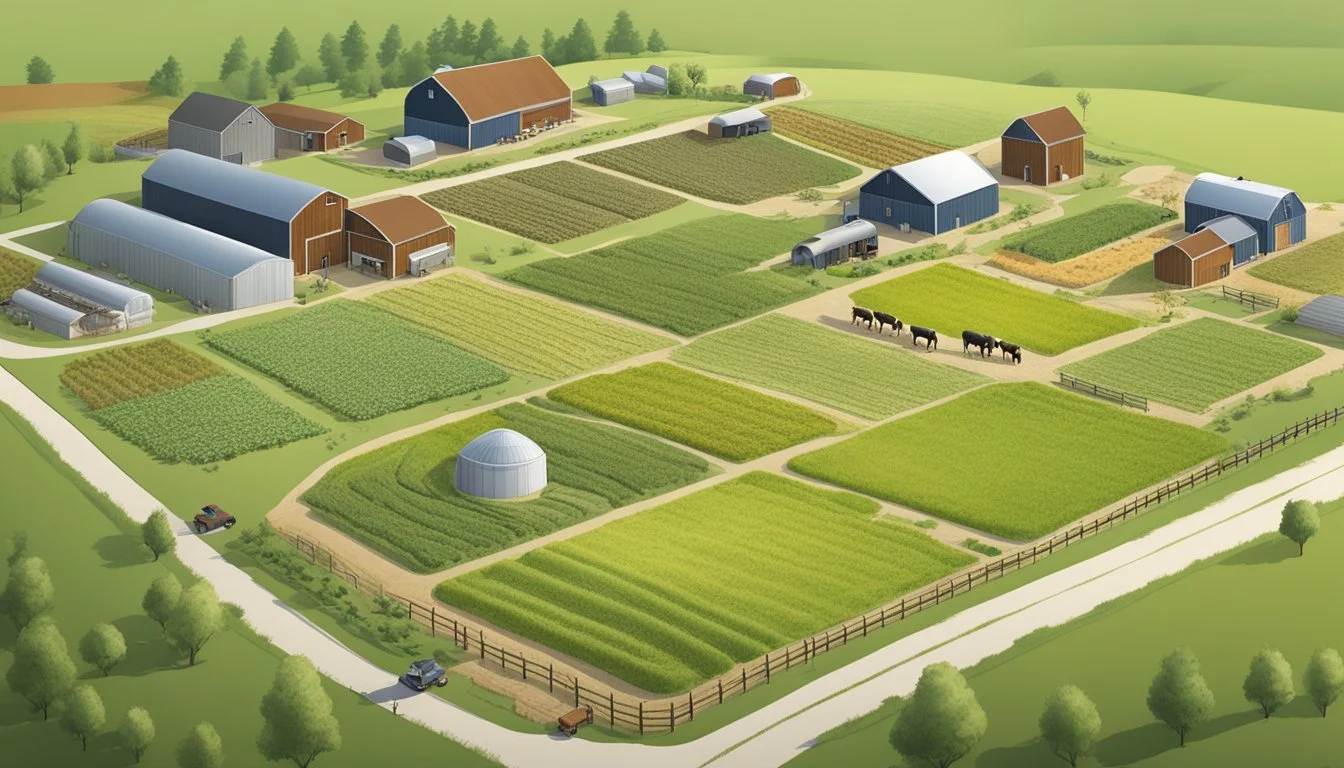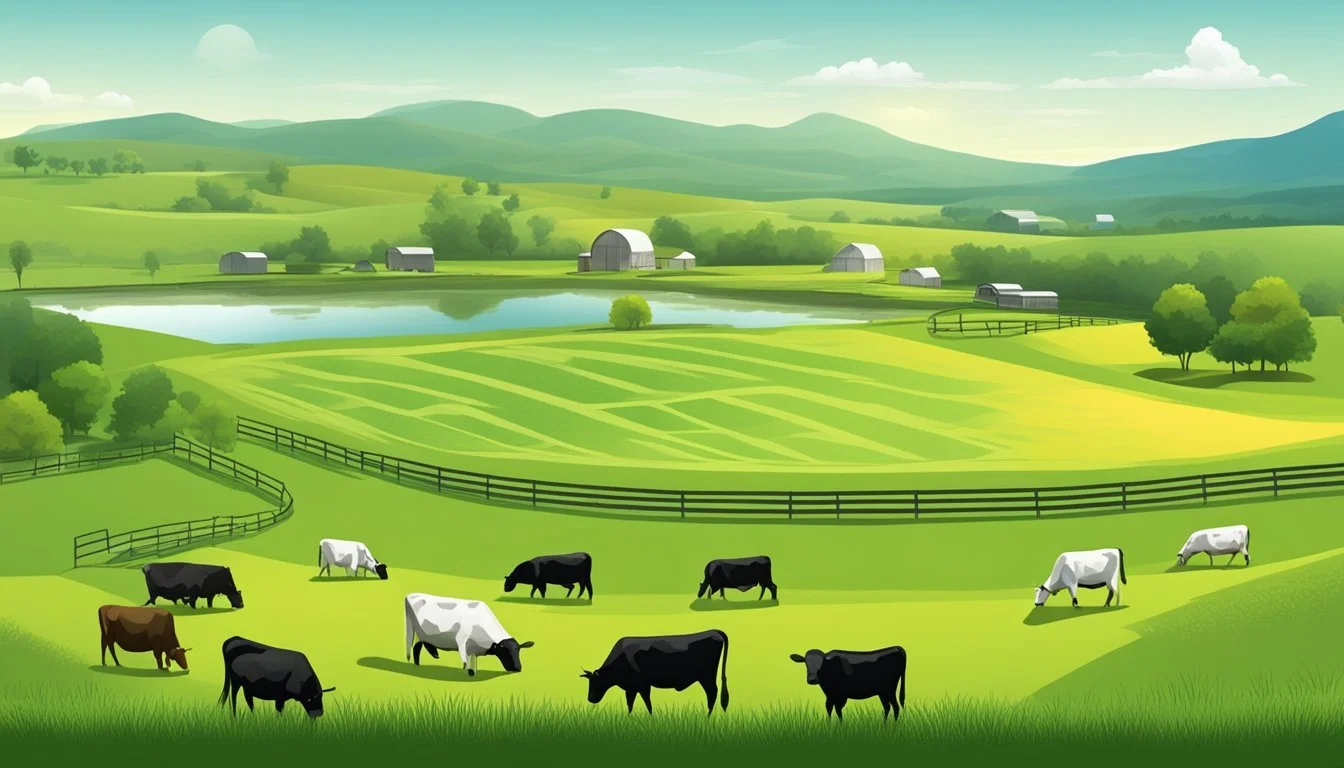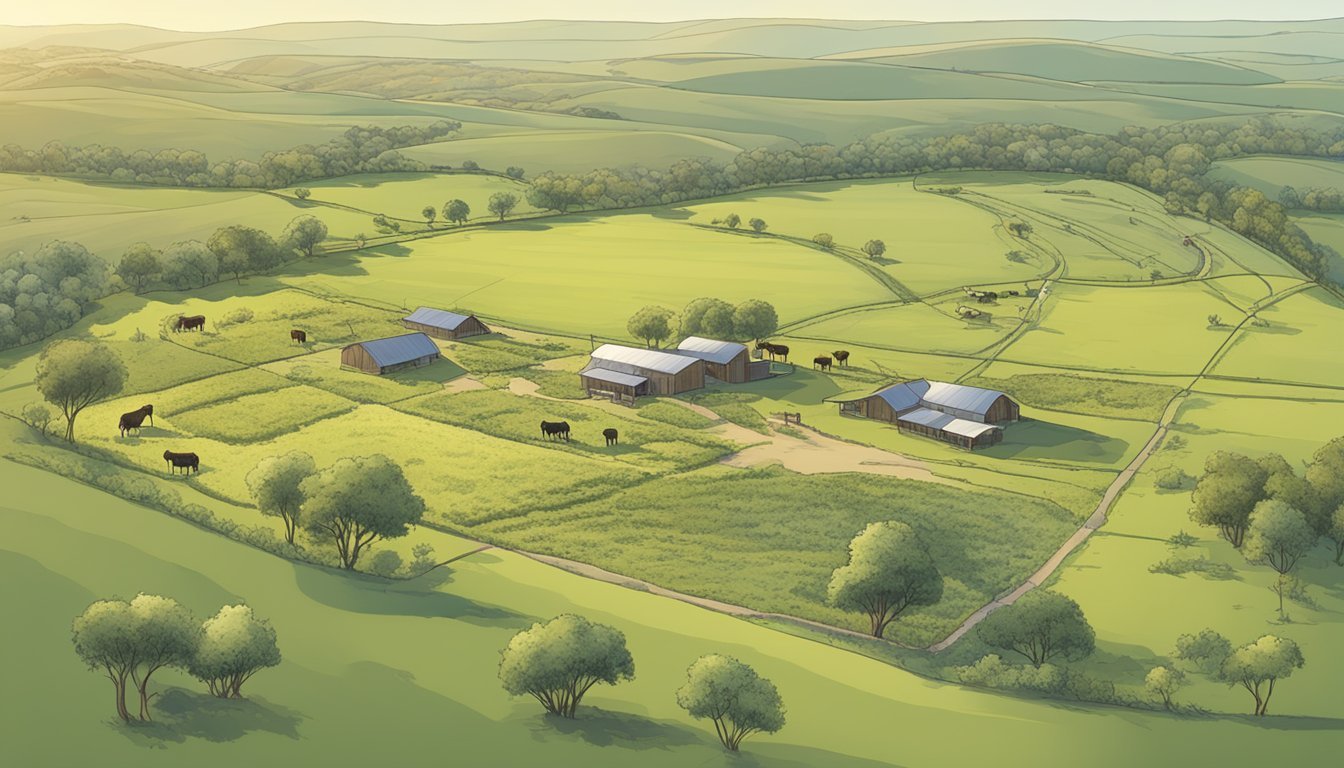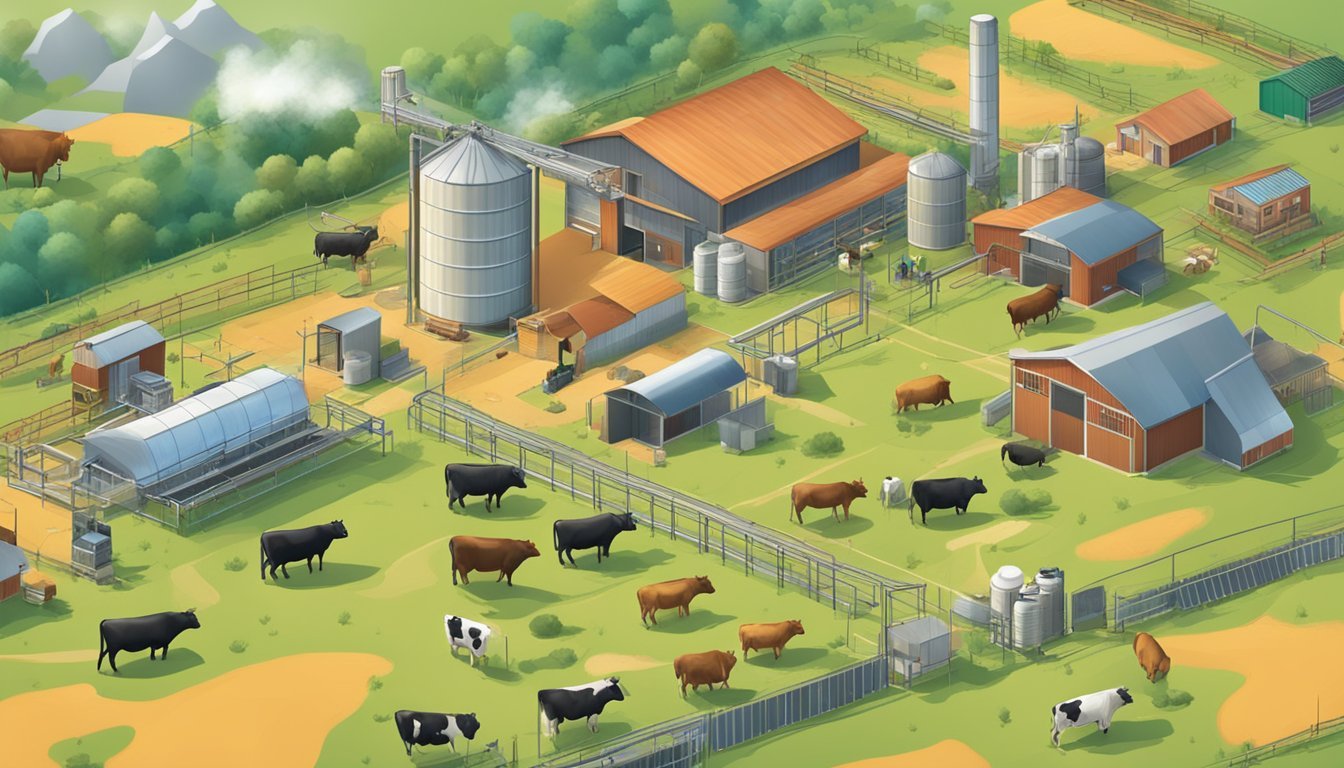How do I Plan for Long-term Cattle Farm Sustainability
Strategies for Future-Proofing Your Livestock Business
Planning for long-term sustainability in cattle farming involves a multifaceted approach that prioritizes both environmental stewardship and economic viability. It requires a deep understanding of the ecological processes, as holistic management practices underscore. These practices, developed initially by Allan Savory, are designed to optimize the health of the land, the well-being of the animals, and the socioeconomic interests of the community. Cattle ranchers adopting this method find that their decision-making becomes more attuned to the impacts on their environment, ensuring a balance between agriculture and nature that can stand the test of time.
Setting clear objectives aligns with the ethos of sustainability, as it helps in driving the business towards a specific direction while staying responsive to changes. Long-term goals are invaluable in this context. They lend a sense of purpose and provide a roadmap for ranchers, carving out a strategic path that is both responsible and resilient against the challenges of modern farming.
An essential step in initiating a sustainable cattle ranch is crafting a well-though-out business plan. This document is a cornerstone for success, guiding the alignment of market research, financial planning, and business objectives with the overarching goal of establishing a profitable enterprise. The process includes a structured approach to developing the ranch in a manner that respects ecological balance and promotes longevity, ensuring that the farm can thrive for generations.
Understanding Sustainability in Cattle Farming
Sustainable cattle farming is an approach that balances environmental, economic, and social objectives to ensure long-term viability. Farmers must consider environmental stewardship, aiming to minimize their ecological footprint. Key environmental practices include:
Soil management: Maintaining soil health is essential for pasture productivity and carbon sequestration.
Water resource management: Efficient use of water resources preserves this crucial input for future generations.
Farmers also focus on the economic sustainability of their operations to ensure their cattle farm can continue to operate and thrive. This includes:
Diversifying income streams
Implementing cost-effective farming practices
Investing in renewable energy sources
Lastly, the social aspect involves supporting the wellbeing of workers and contributing to the local community. For example:
Ensuring fair labor practices
Engaging in community development initiatives
Farmers may apply holistic management techniques, which underscore the interconnectedness of their actions with the land and animals. The goal is to make decisions that positively impact the entire ecosystem, including the health of the cattle, to foster an economically viable and environmentally responsible farm. By incorporating sustainable livestock farming strategies, they address diverse environmental and ethical implications, paving the way for resilient agricultural systems.
Environmental Stewardship in Cattle Farming
Environmental stewardship in cattle farming focuses on effective land management, water conservation, and enhancing biodiversity to maintain ecosystem health. Sustainable agriculture practices are paramount for long-term success, emphasizing soil health, reduction of emissions, and ecologically beneficial strategies.
Effective Land Management
Cattle farmers must prioritize soil health to ensure long-term land productivity. Practices such as rotational grazing optimize land use, reduce erosion, and protect soil fertility. Through careful planning, farmers can maintain the balance between livestock density and land capacity, which is essential for carbon sequestration and minimizing climate change effects.
Water Quality and Conservation
Water quality is critical for sustainable cattle farming. Management practices should aim to prevent contamination from manure and chemicals. Strategically designed water management systems and natural buffer zones help in purifying runoff, safeguarding local waterways. Additionally, cattle farmers can contribute to water conservation by using technologies such as drip irrigation and storing rainwater.
Biodiversity and Ecosystem Health
A diverse farm ecosystem is more resilient and productive. Cattle farmers should protect wildlife habitats and native plant species, fostering an environment where a variety of organisms can thrive. Incorporating silvopasture or integrating tree lines are strategies to promote ecological balance, which supports biodiverse ecosystems and mitigates the impacts of ecological stressors.
Economic Aspects of Sustainable Cattle Farming
In envisioning a sustainable cattle farm, one must consider the economic viability, which ensures that the practices not only benefit the environment but also promote long-term profitability. From improving farm efficiency to embracing market opportunities, the economic dimensions of sustainability play a pivotal role.
Improving Farm Profitability
Implementing sustainable ranching practices has been shown to enhance the economic profitability of cattle farms. For instance, efficient pasture management can lead to lower feeding costs, as highlighted by EcoMENA, since well-maintained pastures can reduce the reliance on supplemental feeds. Additionally, the adoption of renewable energy sources can cut down on operational expenses, contributing to improved net margins over time.
Creating Efficient Supply Chains
An efficient supply chain is key to ensuring that cattle farms remain economically sustainable. By building relationships with local processors and marketers, a farm can streamline its operation, reducing transportation costs and benefitting local economies. Prudent marketing strategies tap into consumer demand for sustainable and organic beef, offering a niche advantage and potentially higher price points, as discussed in the guide on Texas Real Food.
Diversifying Revenue Streams
Diversification is a robust strategy for long-term economic sustainability. Farms can achieve this by exploring various revenue streams, such as agritourism or selling other farm-related products. By doing so, they spread financial risk and tap into different markets, which can help maintain steady income even when traditional beef markets fluctuate. Additionally, diversifying into areas like direct-to-consumer sales can align with sustainability goals by building a loyal customer base invested in the ranch's sustainable mission.
Social Responsibility in Cattle Ranching
Planning for long-term sustainability in cattle farming entails more than just environmental considerations; it also includes robust practices towards social responsibility. This encompasses the well-being of animals, the involvement and education of local communities, and the support of the economies where these farms operate.
Animal Welfare
Cattle ranchers recognize that ethical treatment of livestock is not just a moral imperative but also a key component of sustainability. Practices such as the ones derived from holistic management look at the comprehensive health of the land and animals. The U.S. Roundtable for Sustainable Beef has been instrumental in setting standards to ensure that animals are cared for in ways that promote their well-being and meet consumer demand for ethically raised beef.
Community Engagement and Education
Ranching communities have a responsibility to engage with the public and educate people about their practices. By fostering transparency and openness, ranchers can build trust with consumers and local residents. Initiatives include farm tours, participation in local schools, and educational programs that highlight the interdependence of agriculture and food security, especially significant in light of disruptions like the COVID-19 pandemic.
Supporting Rural Economies
Cattle ranching is more than an agricultural activity; it is a vital part of the economy in rural communities. The beef industry contributes to sustaining jobs and promoting productive local economies. Ranchers are often among the leading employers in these areas, and through strategic decisions, they can positively impact the financial well-being of entire regions. Additionally, efforts towards sustainability can lead to alignment with larger sustainability goals, generating new opportunities for economic growth.
Sustainable Farm Management Practices
Implementing sustainable farm management practices is essential for the longevity of a cattle farm. These methods focus on maintaining ecological balance, supporting animal health, and ensuring agricultural productivity.
Grazing Management and Techniques
Effective grazing management is a cornerstone of sustainable farming, optimizing forage use and pasture health. Rotational grazing involves moving livestock between pastures to allow for regrowth and soil recovery, promoting a more resilient ecosystem. Adaptive management of grazing schedules aligns with environmental conditions and herd needs, making it a dynamic component of farm planning.
Soil Conservation and Health
A farm's productivity is deeply rooted in soil health. Sustainable farming employs strategies like cover cropping and crop rotation to enrich the soil, minimize erosion, and bolster microbial diversity. Integration of organic matter through these practices helps build soil structure and fertility, directly benefiting forage availability for grazing.
Pest and Disease Management
Integrated pest management (IPM) is an environmentally sensitive approach to controlling pests and diseases. It relies on a combination of practices such as biological control, habitat manipulation, and resistant varieties. By understanding the pest lifecycle and employing targeted controls, farmers can minimize chemical use and preserve beneficial insect populations.
Genetic Selection and Breeding
Genetic selection plays a pivotal role in cattle farm sustainability, focusing on breeding for traits that enhance productivity and disease resistance. A strategic production plan takes into account genetic principles to sustain herd improvement. Breeding choices should reflect both economic goals and the welfare of the animals, ensuring a balance between production efficiencies and sustainable practices.
Innovative Techniques in Livestock Management
Sustainability in cattle farming hinges on adopting innovative management techniques. These approaches not only improve the efficiency and productivity of beef cattle but also ensure the protection of natural resources.
Utilizing Renewable Energy
In the quest for sustainability, one must consider the integration of renewable energy sources. Solar panels can power electric fencing and water pumps, cutting down on the reliance on non-renewable energy. For instance, H2Oalert is a cutting-edge tool that facilitates not only the monitoring of water quality for livestock but also the efficient use of energy in real-time through wireless technology.
Adopting Regenerative Agriculture
Regenerative agriculture practices constitute a transformative approach in livestock farming. These practices improve soil health, enhance biodiversity, and boost carbon sequestration. Key techniques include diversified crop rotations and integrating livestock grazing, which not only regenerates the land but also often results in healthier, more robust ecosystems.
Implementing Controlled Grazing
To foster controlled grazing, precise management of grazing patterns is pivotal. Methods like rotational grazing mirror natural herd movements, promoting the growth of diverse plant species, and the maintenance of pasture health. Livestock management systems that incentivize such natural movements lead to sustainable pasture use and improved animal welfare. This sustainable strategy is essential for long-term viability and can be seen in initiatives like the innovations in cattle farming which underscore the intersection of technology with traditional grazing practices.
Integrated Resource Management
Integrated Resource Management (IRM) encapsulates the strategic planning and sustained execution of using resources efficiently and effectively to meet the long-term goals of a cattle farm aimed at sustainable agriculture. This involves employing practices that enhance water resources, conserve natural ecosystems, and preserve wildlife habitats while supporting forage production and beef production practices.
Water Resources and Retention
Water is a critical resource on any cattle farm, and sustainable farming requires effective water retention strategies. Techniques such as the construction of ponds and swales can capture rainwater, reducing reliance on external water sources. Additionally, implementing rotational grazing practices can maintain soil health, allowing for improved water infiltration and reduced runoff. The Nature Conservancy often works with ranchers to develop strategies that safeguard water resources while also enhancing ecosystem services.
Conservation Practices
Adoption of conservation practices is foundational in sustainable agriculture. These practices can include cover cropping, no-till farming, and managed grazing systems. NRCS (Natural Resources Conservation Service) provides guidance and funding to enable ranchers to adopt practices that increase soil carbon sequestration and reduce environmental impact. Through these means, resources are conserved, and ranching communities are strengthened, ensuring the viability of cattle farms for the future.
Wildlife Habitat Preservation
The preservation of wildlife habitat is a crucial element of sustainable farming. By incorporating areas of natural vegetation and forests into the farmland, ranchers can create buffer zones that support wildlife habitat and biodiversity. Practices such as rotational grazing can also be designed to protect sensitive ecosystems, working in tandem with organizations like The Nature Conservancy to ensure that both livestock and native species can thrive side by side. Through these efforts, cattle farms can contribute positively to preserving the ecosystem services that benefit both the environment and ranching communities.
Market Dynamics and Consumer Trends
Understanding market dynamics and consumer trends is essential for cattle farm owners and managers aiming for long-term sustainability. These elements help inform decisions around beef production practices, meet consumer demand, and ensure environmental stewardship.
Responding to Consumer Demand
Consumers increasingly prefer beef that is sustainable and has a reduced carbon footprint. In response, farms are adopting practices endorsed by organizations like the U.S. Roundtable for Sustainable Beef to meet these expectations. Walmart, for example, has prioritized the sourcing of sustainably-raised beef to appeal to environmentally conscious consumers. Maintaining transparency in beef production practices and environmental stewardship efforts is critical in meeting the evolving consumer demand.
Building Sustainable Brand Identity
A farm's commitment to sustainability can serve as a powerful marketing tool. Incorporating greenhouse gas emissions reduction strategies and establishing a sustainable brand identity are pivotal. By showcasing these initiatives, cattle farms can differentiate themselves in the market. It is essential to communicate the concrete steps taken towards sustainability, such as incorporating organic beef options, to build trust and credibility with consumers.
Utilizing Niche Markets
Exploring niche markets, like grass-fed or organic beef, can provide economic advantages. Companies like Tyson have acknowledged the growth potential in these sectors by offering specialized products that cater to health-conscious and environmentally aware consumers. Focusing on a niche allows for targeted marketing and can often fetch a premium price, thus capitalizing on specific consumer demands for different animal protein variants.
By strategically navigating market dynamics and consumer trends, cattle farms can establish a sustainable business model that aligns with consumer preferences and contributes positively to the beef industry.
Strategies for Long-term Viability
Achieving long-term viability in cattle farming hinges on maintaining economic profitability while upholding sustainability principles. It involves meticulous financial planning, setting actionable sustainability indicators, and fostering collaborative relationships within the beef industry.
Financial Planning and Investment
Financial planning and investment are the bedrocks of a prosperous long-term cattle operation. Farmers should pledge to develop a comprehensive financial plan that contemplates current assets, future investments, and potential risks associated with climate change. An effective plan includes periodic review and adjustment to ensure continued economic sustainability. Understanding market trends and foreseeing future opportunities in the beef industry, such as those practiced by major players like Tyson, can guide them towards more informed decision-making.
Analyze current and projected cash flows
Explore diversification strategies within the farm operation
Setting and Tracking Sustainability Indicators
To maintain an operation that is ecologically and economically sustainable, farmers must identify and track relevant sustainability indicators. These indicators offer insights into the environmental impact of the farm, the health of livestock, and resource efficiency. For example, metrics on soil fertility or water usage can highlight progress towards sustainability.
Ecosystem health: Monitor soil, water, and biodiversity conditions.
Animal welfare: Assess the wellbeing of the cattle to promote ethical and responsible management.
Engaging in Industry Collaboration
Embrace industry collaboration for enhanced learning and resource sharing. Being actively engaged with community groups, agricultural organizations, and sustainability coalitions supports holistic farm management strategies. This community engagement can lead to a more resilient operation that adequately addresses challenges posed by environmental change and shifts in consumer demand.
Participate in local and national farmer networks
Advocate for sustainable practices within the beef industry community
Policy Implications and Regulations
Effective planning for long-term cattle farm sustainability requires a thorough understanding of regulatory frameworks and adherence to established environmental policies. These guidelines are integral for ensuring environmental stewardship and meeting sustainability goals.
Understanding Environmental Regulations
Regulations often mandate how cattle farms manage clean water and water pollution. In the United States, the Clean Water Act sets the stage for preventing water pollution from agricultural activities. Cattle farmers must comply with regulations regarding manure management and runoff, which can lead to water pollution if not properly managed. They should regularly consult with environmental agencies to stay informed of any changes in legislation that might affect their farming practices.
Adopting Industry Standards
To minimize greenhouse gas emissions and promote carbon sequestration, cattle farmers can follow industry standards such as those set by the Global Roundtable for Sustainable Beef. This includes protocols for feed efficiency, which can reduce methane emissions, and responsible grazing management that maintains the health of grasslands. Corporate stakeholders like Walmart have set their own sustainability goals that often require their suppliers to maintain certain standards, driving the adoption across the industry.
Participating in Sustainability Programs
Engagement with sustainability programs offered by organizations like The Nature Conservancy can provide additional resources and support for cattle farms aiming to be environmentally responsible. The U.S. Roundtable for Sustainable Beef offers guidelines and frameworks to help farmers assess their environmental impact. By participating in these programs, cattle farmers not only contribute to broad sustainability goals but can also benefit from shared expertise and potentially improved market accessibility.








